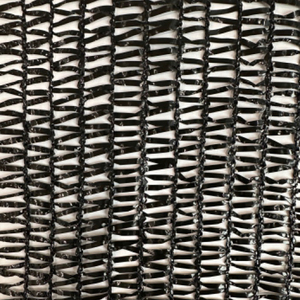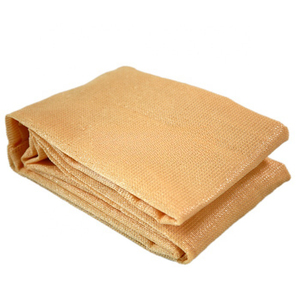(670 products available)




























































































































































































HDPE 180g shade nets are made of high-density polyethylene (HDPE) material. They are 180 grams per square meter in weight. These shade nets are durable and provide different levels of shading and protection. They are ideal for various applications. Here are some of the key types:
Material Composition:
The HDPE shade net is made from high-density polyethylene. This material is known for its durability and ability to withstand harsh weather conditions. It is also UV-resistant, which means it can protect areas below it from harmful ultraviolet rays. This netting is waterproof, making it suitable for both sunny and rainy conditions.
Color Options:
HDPE shade nets come in various colors. Each color can provide a different level of shade and UV protection. For instance, green is often used in gardening because it blends well with nature. Black provides the most shade and has the highest UV protection. Other colors available include beige, blue, and red. The choice of color can be functional and decorative.
Fabrication Process:
The fabrication process of HDPE shade nets involves weaving polyethylene fibers together. This creates a strong, breathable material. The edges of the nets are reinforced to prevent fraying. They may also have grommets or clips for easy installation. The nets are made in different sizes to fit many needs, from small gardens to large sports fields.
Design Aspects:
Shade nets are designed to be lightweight and easy to handle. They can be moved and stored without much effort. Their breathable design allows air to flow through them, which helps plants stay healthy and cool. It also makes them suitable for use in hot climates. Shade nets are fire-retardant. They resist catching fire, which is important for safety in all areas.
Garden Shade:
180 hdpe shade cloth can be used in gardens to create shaded areas for plants that prefer less direct sun. It is especially useful for growing delicate flowers, young plants, or veggies like lettuce and spinach that thrive in cooler conditions. The netting provides filtered light and protects against harsh sun, helping sensitive plants flourish without burning or stress.
Shade for Patios and Decks:
Creating a cool, comfortable space outside your house with hdpe shade netting is easy. It blocks out some sunlight but lets through just enough for a pleasant lighting effect. This netting is ideal for covering patios, decks, or swim-up pools where people relax. It protects from harmful UV rays that can cause skin damage and fade furniture and plants. Shade nets keep areas cool by lowering the air temperature. They are also lightweight and simple to install over outdoor spaces.
Shade for Playgrounds:
Providing a shaded area in which kids can play without getting too hot or sunburned is easily done with hdpe shade netting. This netting works well over public or private playgrounds, keeping the temperature lower and protecting young ones from damaging UV rays. Shade nets are simple to put up and keep clean playground surfaces cool. They give parents peace of mind knowing their children are playing safely in the shade provided by this breathable material.
Shade for Sports Facilities:
Keeping areas cool and shielding athletes from harmful rays is important. Hdpe shade nets do this well over tennis courts, basketball courts, or other sports fields. The breathable material allows air to flow freely while blocking out most sunlight. This keeps the temperature lower, which can help improve performance and reduce the risk of heat-related illnesses. Shade nets also protect benches and equipment from the damaging effects of UV rays.
Shade for Livestock:
Providing a cool, comfortable shelter for animals is easily done with hdpe shade netting. This netting works well over pastures, pens, or any outdoor area where livestock stay. Shade nets protect against harmful UV rays that can cause sunburn or skin issues for animals. They also help lower the temperature in the shaded area, keeping livestock more comfortable. Shade nets are lightweight, durable, and simple to install, making them an ideal solution for providing shade to livestock.
Choosing the right shade netting involves considering many factors. They ensure that the needs are met. They will provide the best sun protection, cooling, and privacy. These factors include:
Purpose and Application:
Clearly define the primary purpose for which the shade net will be used. Is it for agricultural fields to protect crops, for construction sites to reduce dust and provide worker privacy, or for patios and decks to create outdoor shade? The application will dictate the type of netting required.
Shade Percentage:
Different shade nets offer varying levels of UV protection. Decide how much shade is needed. Agricultural shade netting protects plants from direct sunlight and extreme heat. Construction shade netting needs less shading.
Material Quality:
HDPE (High-Density Polyethylene) shade nets are known for their durability and resistance to UV rays. Opt for nets that are tear-resistant, weatherproof, and made from high-quality materials to ensure longevity and performance.
Durability and Weather Resistance:
Consider the climate and weather conditions of the area where the shade net will be used. Choose a netting that can withstand wind, rain, and sun exposure without deteriorating quickly.
Installation and Maintenance:
Look for shade nets that are easy to install and maintain. Check if it comes with reinforced edges, grommets, or clips for secure attachment. Also, consider how often it needs to be cleaned or replaced.
Cost and Budget:
Determine the budget and compare prices. Remember, the cheapest option may not always be the best. Consider the quality and features of the shade netting to ensure it provides good value for money.
Fire Rating:
Some shade nets have flame-resistant properties. It is essential for areas with strict fire safety regulations. It may be required by law in some regions.
Aesthetics:
Consider the color and design of the shade netting. Especially if it will be used in public areas or for commercial purposes. A visually appealing net can enhance the overall look of a space.
Q1: Do shade nets reduce airflow?
A1: Shade nets are made with breathable material. They have holes or gaps that allow air to pass through. So, no, they do not reduce airflow.
Q2: Can shade nets be used indoors?
A2: Yes, shade nets can be used indoors. They are great for covering atriums, indoor gardens, or conservatories where shade is wanted.
Q3: How should one store a shade net when it is not in use?
A3: Clean the shade net before storing it. Then, roll it up and keep it in a dry place, away from sunlight. This will prevent mold growth and UV damage to the net.
Q4: Does the installation of a shade net come with a cost?
A4: The installation cost depends on the structure and the size of the net. Some simple nets can be installed by one person. Others may need professional help.
Q5: Is the maintenance of a shade net expensive?
A5: Shade nets do not need much maintenance. Clean them regularly to remove dirt and debris. Check for holes or tears. Replace them if necessary.